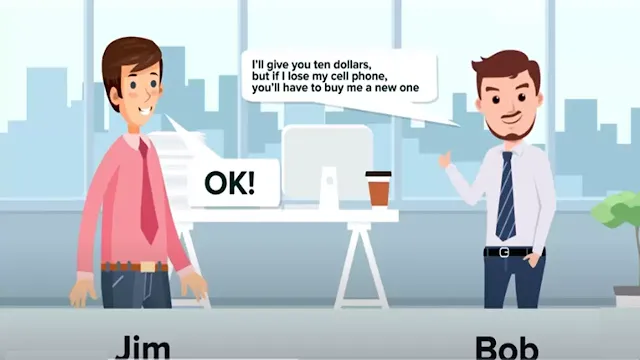<script async src="https://pagead2.googlesyndication.com/pagead/js/adsbygoogle.js?client=ca-pub-8024829435395300"
crossorigin="anonymous"></script>
<ins class="adsbygoogle"
style="display:block; text-align:center;"
data-ad-layout="in-article"
data-ad-format="fluid"
data-ad-client="ca-pub-8024829435395300"
data-ad-slot="8682663231"></ins>
<script>
(adsbygoogle = window.adsbygoogle || []).push({});
</script>
What is Insurance for swashbuckling pirates to a ferocious fire that ravaged the world’s most fantastic city? Insurance has had a colourful past? But how do those grey suits who sell insurance really make money, and how do the inner workings of one of the most complicated fiscal models really work? If these questions whet your curiosity, stay tuned to today’s episode of The Infographics Show – Why do insurance companies make money, and how do they work?
What Is Insurance
What is insurance? Well, insurance is a financial vehicle that helps spread risk. By taking a risk from an individual and spreading it around a community, the individual can go about their personal or business life without crumbling from financial ruin. In the simplest terms, let’s look at two people; for Example,
 |
| What is insurance-How Insurance Companies Make Money? |
One is named Bob, and the other Jim. Bob tells Jim, I’ll give you ten dollars, but if I lose my cell phone, you’ll have to buy me a new one. If Jim agrees, then that’s insurance right there. Insurance companies make money by evaluating the risk and deciding whether it is worth the gamble. Jim believes that Bob probably won’t lose his phone and he’ll, therefore, be ten dollars richer.
If Jim finds 100 more people willing to give him 10 bucks each to cover their phones, he has 1,000 dollars. If one of those 100 people loses their phone and Jim pays 100 dollars as compensation, he still has 900 bucks. This insurance idea has been floating around since the ancient Chinese and the Babylonians spread their shipping risks. But it wasn’t until around the 17th century in London that modern insurance took off.
<script async src="https://pagead2.googlesyndication.com/pagead/js/adsbygoogle.js?client=ca-pub-8024829435395300"
crossorigin="anonymous"></script>
<ins class="adsbygoogle"
style="display:block; text-align:center;"
data-ad-layout="in-article"
data-ad-format="fluid"
data-ad-client="ca-pub-8024829435395300"
data-ad-slot="8682663231"></ins>
<script>
(adsbygoogle = window.adsbygoogle || []).push({});
</script>
Merchant marine men and traders often hung out in coffee shops in the business district of London, and while drinking copious amounts of coffee, the idea of modern-day insurance was born. Lloyds of London, the heart of worldwide insurance, was developed inside one of these coffee houses, and here’s how it worked.
First, you have the client. Say the client has a ship he is nervous about losing to pirates offshore, or perhaps the vessel will be destroyed in bad weather.
The client approaches an insurance broker. The broker looks at the ship or pays someone to look at the boat, and they decide how much the total value of that ship is worth. The broker then assesses the risk.
He asks the client where he is travelling to and what cargo he will be carrying. With all this information, he draws up an insurance policy that he shows to the third person in the chain - the underwriter.
For a cheaper premium, the underwriter may exclude a few risks. And for a few more bucks, he may include some extra risks. Now, there are usually lots of underwriters approached. Still, one will be the lead, and the lead underwriter, like Jim, will generally take the most significant proportion of the risk and sign his name first on the policy document.
He is known as the underwriter, as he writes his name under the risk on the policy. The lead underwriter makes the major decisions when it comes to accepting the policy and will be the leading man to agree to any claims on the policy.
Once the policy terms are agreed to, it is made legal, the client is happy, and the ship sets sail - but not before paying the insurance premium to the broker, who will take about 10% and pass the rest on to the underwriter.
But what should happen if pirates board the ship, steal the cargo, and burn it at sea? The client (if he is still alive; if not, a representative of the client) will speak to the broker, and the broker will visit with the lead underwriter and tell him the bad news.
The rest of the underwriters (there may well be as many as 20 on a significant policy) are told the news, and then the broker must negotiate the best claim settlement for the client or his or her representatives.
The underwriters pay the money to the broker, who passes it on to the client, without deducting any cut.
The broker makes his money once the premium is paid and will help negotiate the best claims for his clients through gentlemanly honour and the prospect of future business. Now it may not be all bad news for the Underwriter. He may have reinsured the policy if he is wise and not greedy.
Reinsurance puts the underwriter in the client's position. The underwriter sells the policy to another underwriter or firm of underwriters while retaining a share of the premium. Still trying to figure it out?
Think back to Jim and his phone insurance. If Jim resold his 10-dollar phone policy for 9 dollars, rather than the 10 he received, he gets to keep a dollar each for each of his 100 clients, meaning he has 100 dollars completely risk-free. Similarly, much of the modern-day insurance that flows through Lloyds of London is reinsured out of the building to smaller companies worldwide.
So what starts as a simple agreement between the client and the broker (or Jim and Bob) is spread across a business community, and each stands to profit from the premium or cut any losses.
This is how insurance works – by the spreading of risk over communities. So, that is how maritime insurance was born.
It was developed through ship-owners needing to carry on in business should they lose everything at sea. But what about property insurance? Around the same time, in 1666, the great fire of London devastated the city where modern-day insurance was born, and famous architect Christopher Wren, in his great London redevelopment project in 1667, made sure to include an office in his new plan. Now, property insurance is commonplace, with most homeowners having a policy.
Also, medical, life, travel, car, and dental insurance are commonly held policies. Even a pet is a significant insurance business nowadays. Over time, the business model has evolved. Modern-day insurance companies are fiercely competitive, which is good for you, the client, as policies are priced at their lowest possible point. Companies now look to write as many policies as possible to create a financial pool.
They take the premium from thousands of policies and invest it in another financial product. So, the insurance underwriter may pay out more claims than they make in policy premiums. But they have invested all those premiums in a high-interest investment scheme.
They make their money outside of the original insurance product. Insurance, in this example, is a way of creating cash flow to be used in more lucrative investments. And if you are wondering about other creative and lucrative ways to make more cash, what do you think?
Do you have insurance to protect against the unexpected? Do insurance companies charge too much? Is it all just a scam? Let us know your thoughts in the comments! Also, See you next time!
<script async src="https://pagead2.googlesyndication.com/pagead/js/adsbygoogle.js?client=ca-pub-8024829435395300"
crossorigin="anonymous"></script>
<ins class="adsbygoogle"
style="display:block; text-align:center;"
data-ad-layout="in-article"
data-ad-format="fluid"
data-ad-client="ca-pub-8024829435395300"
data-ad-slot="8682663231"></ins>
<script>
(adsbygoogle = window.adsbygoogle || []).push({});
</script>





